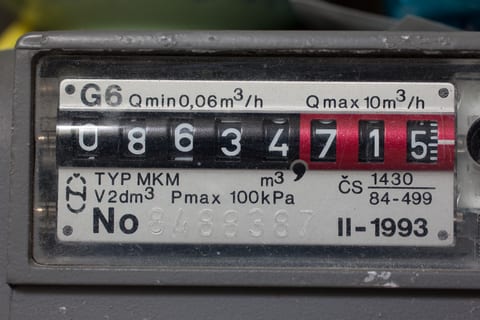
Natural Gas is an Unnatural Government Subsidy
David Williams
July 5, 2012

When a company in the private sector identifies an opportunity to innovate and better meet its consumers’ wants all while earning a larger profit, the company doesn’t need any additional incentives to seize on such an opportunity. In short, this is the reason the government doesn’t need to hand out subsidies to a company in order to transition its vehicle fleet to natural gas. Ok, maybe a little more explanation and evidence are needed.
The Hill recently reported on the findings of a report from IHS CERA that found that “low natural-gas prices mean that it’s economical to power heavy trucks with the fuel even without federal incentives.” And for anyone who’s been following this issue closely, the report’s findings bolster the arguments of those who oppose the NAT GAS Act, a bill in Congress that would offer financial incentives for companies to transition their vehicle fleets to natural gas.
The IHS CERA study is not the only place one can look to find further evidence that a federal subsidy for natural gas is unnecessary. For those who’d like to see federal dollars go to natural gas vehicles, there have been plenty of news stories lately which provide examples of companies transitioning their fleets to natural gas entirely on their own volition, free from a government carrot.
One may wonder how this could happen when the pro-subsidy crowd vociferously contends that companies could not begin such a movement without federal dollars. The answer to this is easy.
Given the low price of natural gas, companies have realized on their own the dollar-saving prospects this price reduction presented. When companies say things like “Natural gas vehicles are cheaper to run” and calculate that “CNG at $2.09 a gallon of gasoline equivalent reduces fuel costs by 40% a year and can save fleet operators up to $1,500 a year per vehicle,” one can’t possible continue to argue – at least not with a straight face – that government funds remain necessary.
For those that think the only way companies will begin converting their vehicle fleets to natural gas is through federal subsidies, maybe they should try reading the news. Let’s take a glimpse at the companies that are already transitioning their fleets to natural gas and what their motivations are for doing so. Hint: it’s not government money.
A few examples:
1. Jared Anderson recently wrote in an article for AOL ENERGY that “in an effort to avoid gasoline altogether, some large companies are avoiding the issue altogether by cashing in on significant fuel cost savings and accelerating moves to switch over their vehicle fleets to run on compressed natural gas.”
2. AOL Energy also recently reported that “Chesapeake announced an agreement with 3M for the company to manufacture a new generation of NGV fuel tanks which would be safer and less costly than existing models.”
3. Additionally, “In the Dallas-Fort Worth area of Texas, companies like AT&T and Verizon have teamed up with Clean Energy Fuels to save roughly $1.50 to $2.00 per gallon on fuel by converting to CNG.”
4. Fox Business reportedthat “Caterpillar, Westport Team Up on Natgas Vehicles.” The piece quoted David Demers, chief executive officer of Westport Innovations, as he explained, “The substantial price difference between natural gas and diesel fuel is resulting in a strong financial incentive to enable off-road applications to take advantage of low natural gas energy costs without sacrificing operational performance.”
All of these examples share at least one thing in common: the company began transitioning its vehicle fleet to natural gas on its own because it presented a great business opportunity to save money while delivering its products more efficiently. The current low price of natural gas in the market is what has prompted companies to move in this direction. However, should the price of natural gas increase, which it likely will at some point in the future, fortunately for taxpayers the price increase will be something the company and industry must deal with, instead of the taxpayer. Whereas if Congress were to succeed in providing financial incentives for the use of natural gas vehicles, then we would be watching the amount of the subsidy increase in correlation to the increase in natural gas prices.
Perhaps the best description of what can come as a result of a company’s dependence on subsidies was provided by a Paul Gaynor, CEO of First Wind, a company that receives the wind production tax credit which is set to expire at the end of the year. In an article on AOL Energy, Gaynor noted “it’s [the subsidy] like heroine, hard to get off.” When considering the tenuous alternative path Congress could choose to lead taxpayers down, we should thank our lucky stars that the NAT GAS Act hasn’t made it any further in Congress.
In an effort to keep Washington off the dangerous drug of superfluous government spending and protect taxpayers’ pocket book, Congress has a rare opportunity to prevent this waste from happening from the very beginning. Hopefully they won’t run out of gas.
